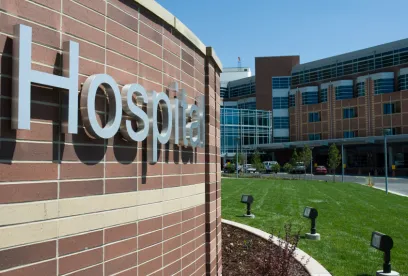The 21st Century Cures Act (the “Cures Act”) (Pub. L. No. 114-255), which was signed into law by President Obama on December 13, 2016, includes a number of important health care provisions, and several address the long-anticipated relief for Medicare “site-neutrality” policies relating to off-campus outpatient hospital departments (“OCODPs”), certain cancer hospitals, and long-term care hospitals (“LTCHs”). The Cures Act is one of the few, broadly supported, bi-partisan health care related bills to pass Congress in recent years.
Hospital Off-Campus Outpatient Department Exceptions
The Cures Act provides exceptions to the “site-neutral” payment policy enacted in Section 603 of the Bipartisan Budget Act of 2015. Under Section 603, non-grandfathered OCODPs will not be reimbursed under the Medicare Outpatient Prospective Payment System (“OPPS”). Rather, they will be reimbursed under the Medicare Part B Physician Fee Schedule. Reimbursement rates for hospital services paid under the OPPS are significantly higher than payments for the same services under the Medicare Part B Physician Fee Schedule. Section 16001 of the Cures Act provides two exceptions to allow certain OCODPs to be reimbursed under the OPPS. The Centers for Medicare & Medicaid Services (“CMS”) issued a Final Rule on November 1, 2016, implementing the provisions of Section 603 for certain provider-based entities (“PBEs”). For more information on the Final Rule, see our earlier blog entry “OPPS Final Rule Finalizes Limits for Off Campus Departments.”
Implemented But Not Yet Billing PBEs. The first exception is for OCODPs that have furnished services but were not billing those services under the OPPS as of November 2, 2015. These locations must have submitted a provider-based attestation (which were and are voluntary) to CMS prior to December 2, 2015 to qualify under this exception. The department will be temporarily grandfathered and eligible to continue to receive OPPS payments for services furnished only for the year 2017. OCODPs that have not already submitted the attestations by December 2, 2015, would not qualify under this exception. This should be a relatively short list of affected hospitals.
“Mid-Build” OCODPs. The second exception is for certain OCODPs that were “mid-build” when Section 603 was signed. OCODPs that qualify will be eligible to bill under the OPPS starting January 1, 2018.
To meet the mid-build requirements, the hospital must have had a “binding written agreement” with an “outside unrelated party” for the “actual construction” of the off-campus department before November 2, 2015. None of the above-quoted terms are defined, and they are critical. We anticipate that CMS will need to provide guidance, or hospitals will be relying on legal opinions as to these critical terms. These measures are consistent with the language in H.R. 5273, which the U.S. House of Representatives passed earlier this year.
Additionally, to seek the protections of the Mid-Build exception, the hospital must:
-
Submit a provider-based attestation for the facility within 60 days of the Cures Act’s enactment (February 11, 2017) – note this is a very important deadline!;
-
Include the department as part of the provider on its CMS 855A enrollment form; and
-
Submit a certification from the Chief Executive Officer or Chief Operating Officer that it meets the “mid-build” requirements within 60 days of enactment, again, the same critical deadline of February 11, 2017. The process for submission, who needs to receive it, etc. is not defined.
The 2017 vs. 2018 dates (underscored above) may reflect a drafting error because OCODPs that have not submitted the attestations by December 2, 2015, but meet the Mid-Build requirements, would have a gap year for 2017. That is, they meet Mid-Build requirements and could bill under OPPS for 2016 and 2018 and thereafter – but would have to bill with the reduced site-neutrality factor for 2017. That is an illogical result.
Cancer Hospital Exclusion
The Cures Act also provides an exclusion from site-neutrality for certain cancer hospitals. To qualify, the provider must be defined as a “cancer hospital” under section 1886(d)(1)(B)(v) of the Social Security Act, which provides three classifications of cancer hospitals. The hospital must have been either:
-
Classified by the Secretary before December 31, 1990, as a hospital “involved extensively in treatment for or research on cancer”;
-
Recognized as a “comprehensive cancer center” or “clinical cancer research center” by the National Cancer Institute (“NCI”) of the National Institutes of Health (“NIH”) as of April 20, 1983. The hospital would need to be located in a State which, as of December 19, 1989, was not operating a demonstration project under section 1814(b) of the Social Security Act, and the hospital must have applied and have been denied, on or before December 31, 1990, for classification as a hospital involved extensively in treatment for or research on cancer. Additionally, the hospital needs to be licensed for less than 50 acute care beds, and have demonstrated for the (4) four-year period ending on December 31, 1996, that at least 50 percent of its total discharges have a principal finding of neoplastic disease; or
-
Recognized as a “clinical cancer research center” by the NCI of the NIH as of February 18, 1998. The hospital must have never been reimbursed for inpatient hospital services under a Section 1814(b) of the Social Security Act demonstration project. Additionally, the hospital must be a freestanding facility organized primarily for treatment of and research on cancer and is not a unit of another hospital. The hospital, as of December 21, 2000, must have been licensed for 162 acute care beds, and have demonstrated for the (4) four-year period ending on June 30, 1999, that at least 50 percent of its total discharges have a principal finding of neoplastic disease.
As noted, this site-neutrality exception only applies to specifically-identified cancer hospitals. But cancer hospitals that are engaged in joint ventures or other collaborative arrangements as part of comprehensive cancer centers may be able to bring some of the benefits of the Cures Act to those transactions.
In addition to being classified as a “cancer hospital,” OCODPs of the cancer hospitals must submit a provider-based attestation within 60 days of enactment of the Cures Act (again, February 11, 2017). In the case of new departments, they would need to submit a provider-based attestation within 60 days after the date the provider-based requirements are met. This is another important note as many hospitals, cancer or otherwise, have not filed provider-based attestations as such filings are voluntary. To receive the protections of the Cures Act, these filings are now mandatory.
CMS Audits Forthcoming
The Cures Act requires the Secretary of the DHHS (likely to be delegated to CMS) to audit OCODPs submitting provider-based attestations to meet the “mid-build” requirement as well as the cancer hospital requirements. The Secretary will audit the compliance of the attestations for mid-build projects before December 31, 2018. For cancer hospitals, the Secretary will audit compliance within two years of receiving its attestation.
LTCHs Temporary Exceptions
Section 15009 of the Cures Act provides a temporary site-neutrality exception of the LTCH site-neutral criteria for certain hospitals that treat patients with brain and spinal cord injuries for fiscal years 2018 and 2019. The hospital must have been a not-for-profit LTCH on June 1, 2014. Additionally, at least 50 percent of discharges in 2013 were classified under MS–LTCH–DRGs 28, 29, 52, 57, 551, 573, and 963. Section 15010 of the Cures Act also provides a temporary exception of the LTCH site-neutral criteria for payments for hospitalizations for severe wounds for all grandfathered LTCHs for fiscal year 2018.






 />i
/>i
